
Image: Shutterstock
About This Quiz
How much do you know about some of the world's most precious and endangered animals? Think you could recognize them from just one image? Take this quiz and find out!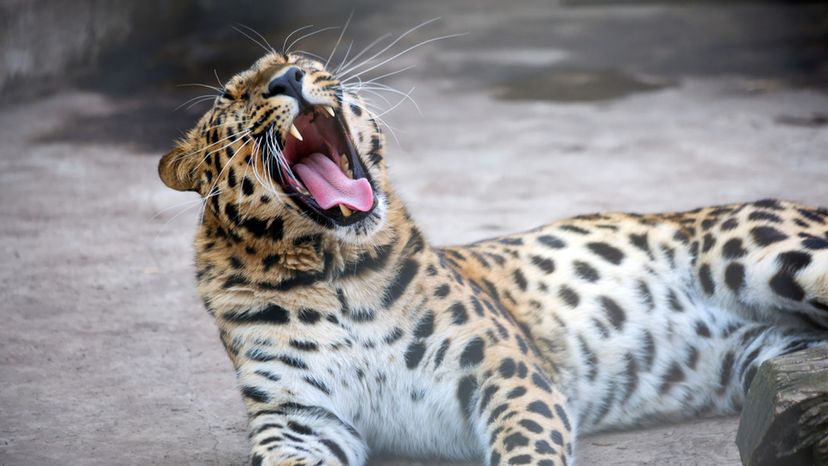
shutterstock
Which animal is this?
Tiger
Amur Leopard
With only 12 found in China and a further 57 in Russia, as of 2015, the plight of the Amur Leopard is dire. There is hope, however, since the Amur Tiger was saved from extinction 70 years ago, when just 40 existed. There are many reasons for the decline of the world's rarest cat, including loss of natural habitat, fragmentation, scarcity of prey as well as poaching.
Snow Leopard
Saola
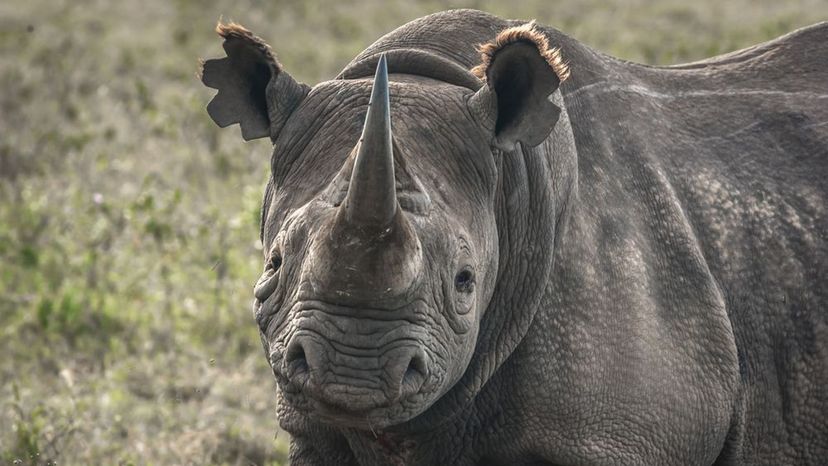
shutterstock
Which animal is this?
Black Rhino
Black Rhino are part of the WWF's critically endangered list, with fewer than 5,000 left in the world. Although they are now poached mostly for their horns - which are made out of a protein called keratin, used to make hair and nails - rhinos have been hunted since colonials set foot in Africa. A male Black Rhino can stand 6 feet tall at the shoulder and weigh up to two tons!
Hippo
African Elephant
Tapir
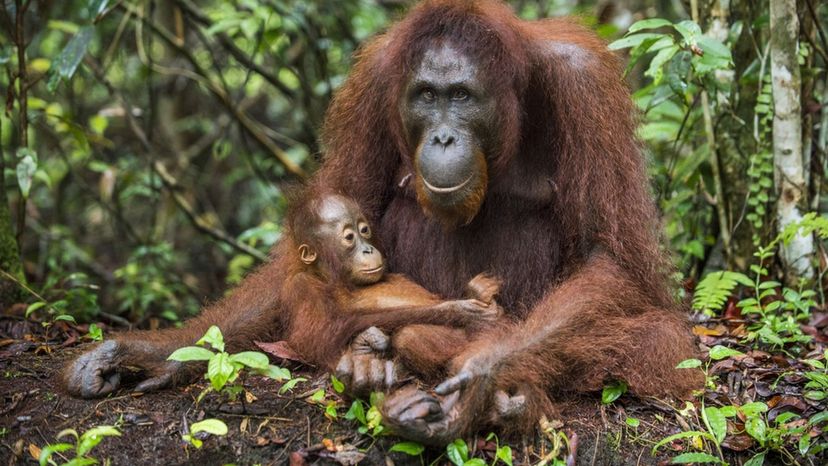
shutterstock
Which animal is this?
Silverback Gorilla
Macaque
Gelada
Bornean Orangutan
Male Bornean orangutans have large cheek pads, while females do not. Thanks to extensive deforestation of their natural habitat, as well as poaching, the Bornean Orangutan population only numbered around 50,000, as of 2011. Orangutans are extremely clever and make use of tools in their daily activities. They share 97% of the same DNA as humans.
Advertisement
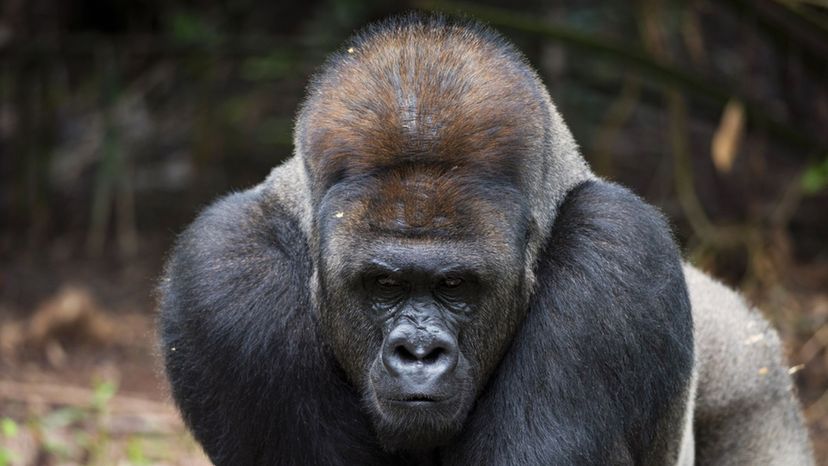
shutterstock
Which animal is this?
Chimpanzee
Eastern Lowland Gorilla
This species, also called Grauer's Gorilla. lives in the Democratic Republic of Congo. Their numbers have declined sharply, due to civil war in the D.R.C. and mining for minerals used to make mobile phones. This species is the biggest of the four subspecies of gorilla.
Southern Ape
Golden-Faced Saki
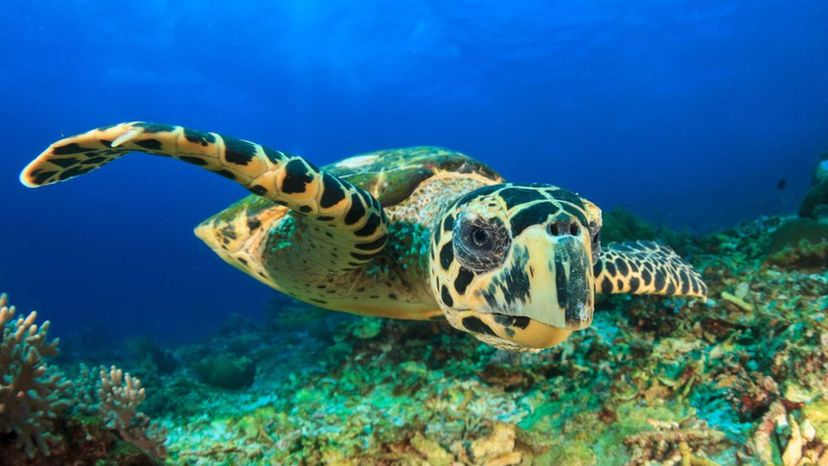
shutterstock
Which animal is this?
Hawksbill Turtle
The Hawksbill Turtle is currently found on the critically endangered list of the WWF. They live in the world's tropical oceans and spend much time in lagoons or near coral reefs. Unfortunately, their numbers continue to decline because of overfishing, egg collection, a decrease in their breeding habitats, human development along coastlines and pollution. Hawksbills take 20 to 40 years to mature.
Fin Whale
Sea Horse
Sea Otter
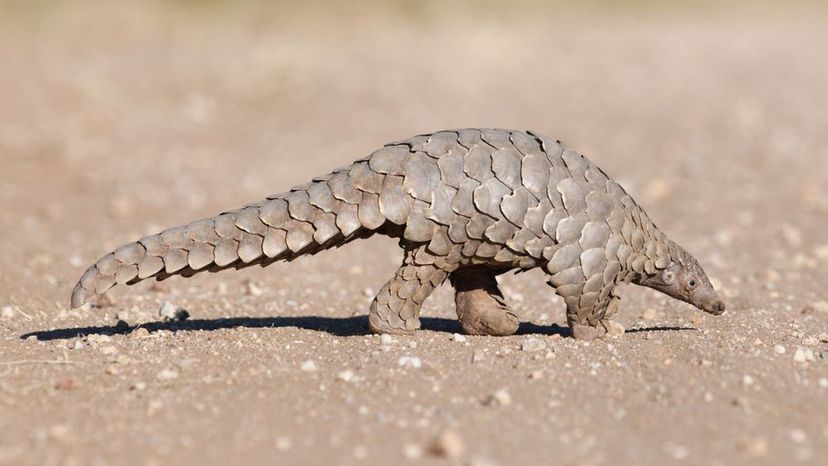
shutterstock
Which animal is this?
Anteater
Mongoose
Pangolin
Pangolins are also known as scaly anteaters, because they have a similar diet. These animals, however, are covered in scales that act as armor. Unfortunately, this makes them a prime target for wildlife trade, both for their scales and meat. There are eight different species of Pangolin. Four are found in Africa and four in and around Asia.
Aardvark
Advertisement
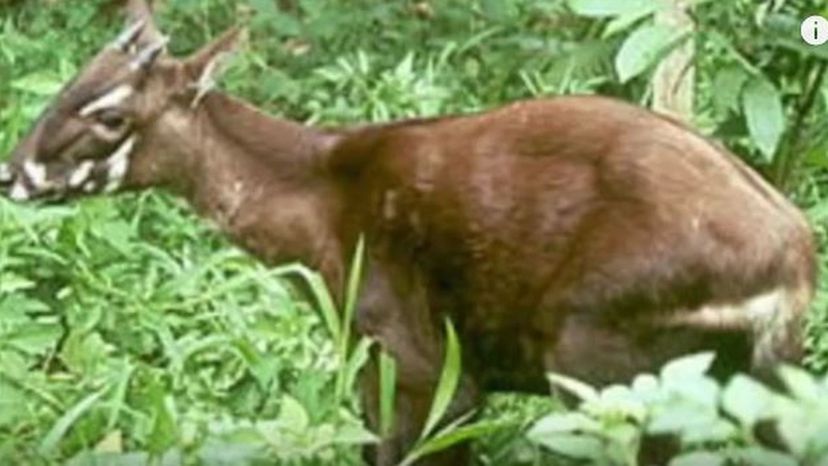
youtube
Which animal is this?
Saola
Although population numbers are unknown, the Saola, or Asian unicorn is critically endangered. Related to cattle, these creatures live in evergreen forest areas and are predominately found in Vietnam, but also occur in Laos. Interestingly, they were only discovered in 1992, making the first new species of large mammal found in 50 years. There are none living in captivity.
Bison
Oribi
Black Buck
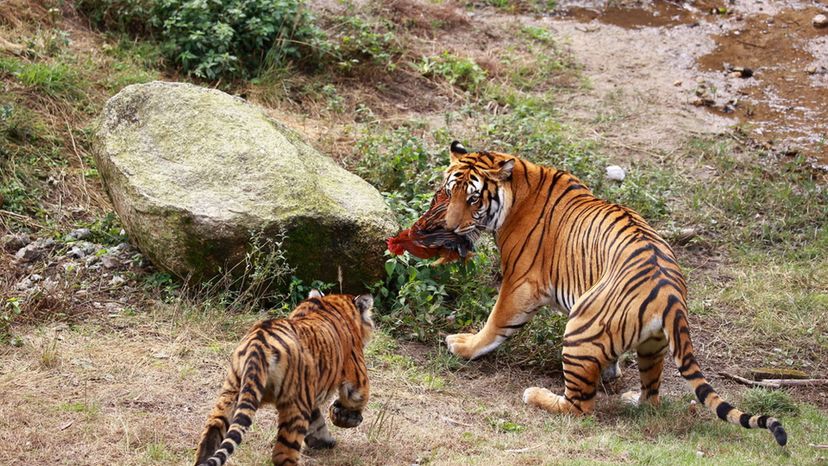
shutterstock
Which animal is this?
Jaguar
African Lion
Red Wolf
South China Tiger
Originally native to the southern regions of China, the South China Tiger is functionally extinct, with none seen in the wild for close to three decades. This is thanks to the fact that it is considered a pest and relentlessly hunted, despite the Chinese government implementing a ban on hunting in 1979.
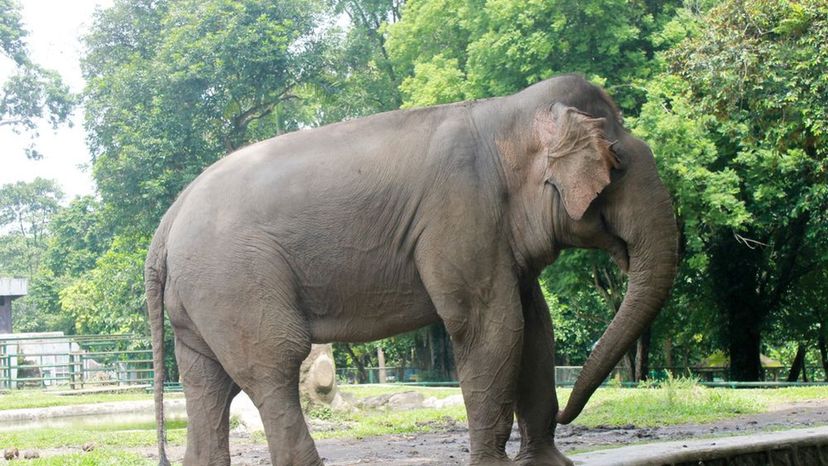
shutterstock
Which animal is this?
Hippo
Sumatran Elephant
With just 2,800 of these magnificent animals found in the wild, the Sumatran elephant is on the critically endangered list. This is not only thanks to poaching but around 70% of their natural habitat has been lost to deforestation. In fact, as of 2012, in just one generation, their population has declined by an astonishing 50%.
White Rhino
Quokka
Advertisement
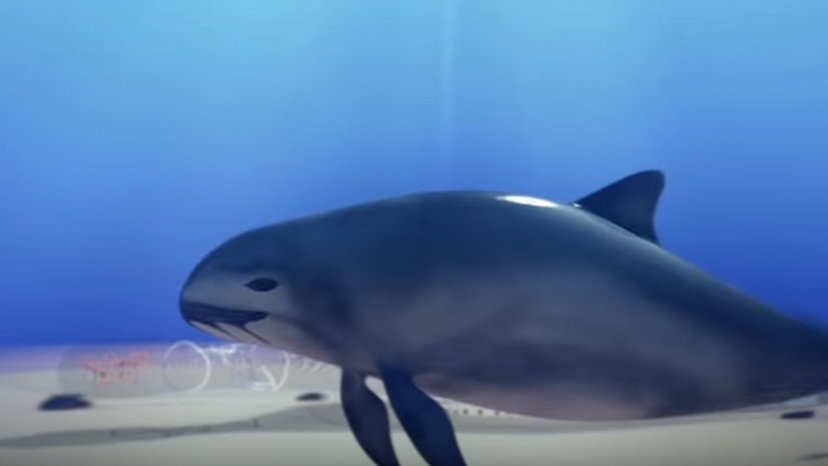
youtube
Which animal is this?
Vaquita
Despite only have been discovered in 1958, the Vaquita, a small porpoise that lives in the Gulf of Mexico, is now critically endangered. This is mostly as a result of illegal fishing with gill nets. In fact, the population of these mammals has halved in just three years and it is estimated that there are only 60 left, as of 2016. They are easily distinguished from dolphins and other porpoises, thanks to a black ring around their eye, as well as black markings around their mouth.
Great White Shark
Bottle Nose Dolphin
Orca
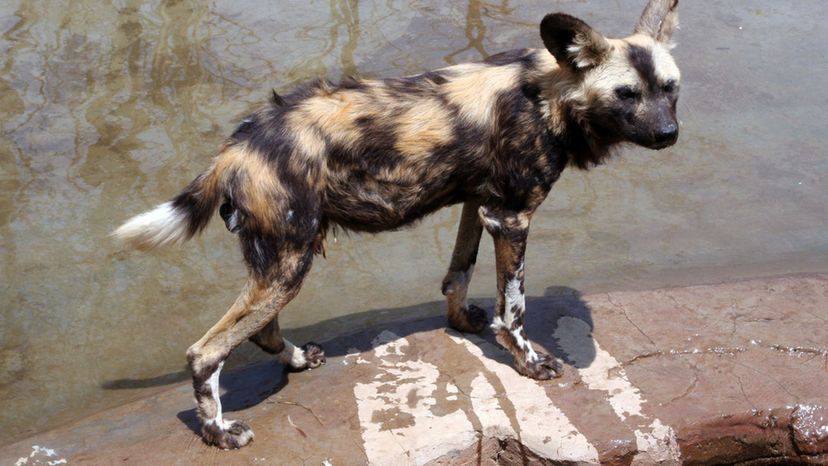
shutterstock
Which animal is this?
Sun Bear
Malayan Tiger
African Wild Dog
With just over 6,000 left in the wild, as of 2016, the African wild dog is an endangered species. Due to the influx of humans into their habitat, as well as the fact that they are seen as a pest responsible for killing livestock, the population of this species continues to fall. Conservationists have considered a name change - painted dog or painted wolf - to differentiate it from the common stray and make preservation efforts more appealing. They are mostly found in southern and eastern Africa.
Panther
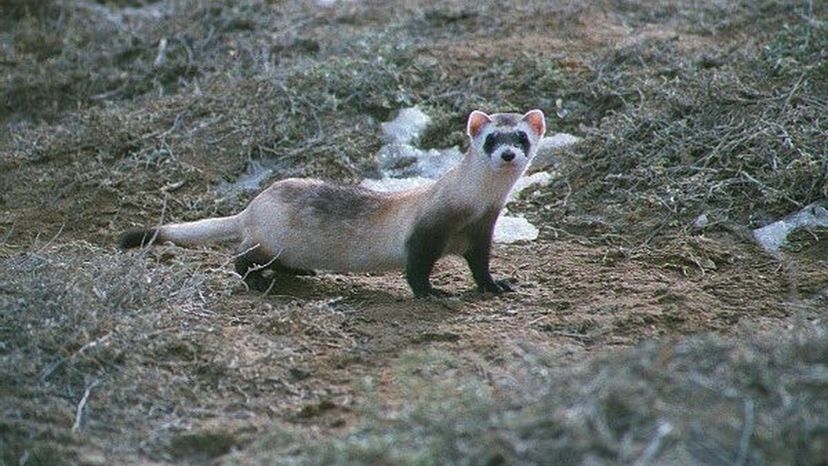
Wiki Commons
Which animal is this?
Wolverine
Black-Footed Ferret
Although close to the point of extinction, the black-footed ferret's numbers have increased over the past few years. They were thought to be extinct in the 1970s. Their chief source of food, the prairie dog, is considered a pest and ruthlessly eradicated. They are the only ferret species native to the United States.
Polecat
Weasel
Advertisement
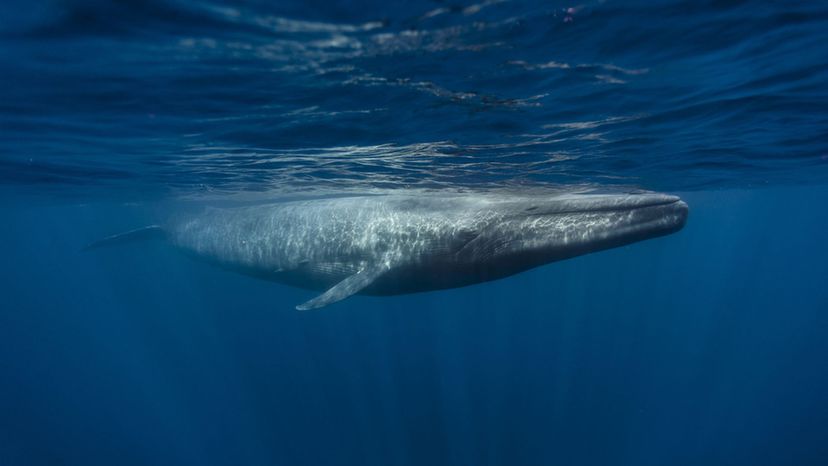
Shutterstock
Which animal is this?
Basking Shark
Great White Shark
Barracuda
Blue Whale
With a population of between 10,000 to 25,000, the Blue Whale remains part of the WWF's endangered species. This is the largest mammal on earth, weighing in at over 200 tons and growing up to 30m in length. Before receiving protection in 1967, Blue Whales were almost hunted to extinction with around 350,000 killed between the early 1900s and 1967.

shutterstock
Which animal is this?
Albacore
Artic Char
Barramundi
Bluefin Tuna
With the rise in popularity of sushi worldwide, the population of bluefin tuna, one of the primary proteins used in making the popular Japanese dish, has dropped drastically. They have become so rare in fact, that the prices paid for them are astronomical. In fact, one fish was sold for over a million dollars in Japan in 2013. One major factor in declining numbers is the fact that fish are removed from the ocean before they reach sexual maturity, at five years of age.

shutterstock
Which animal is this?
Howler Monkey
Bonobo
Residing mostly in the Democratic Republic of Congo, it is estimated that less than 100,000 bonobos remain in their natural habitat. This is mostly due to the fact that their habitat is slowly been destroyed by deforestation as well as that they are hunted for bush meat.
Orangutan
Gorilla
Advertisement
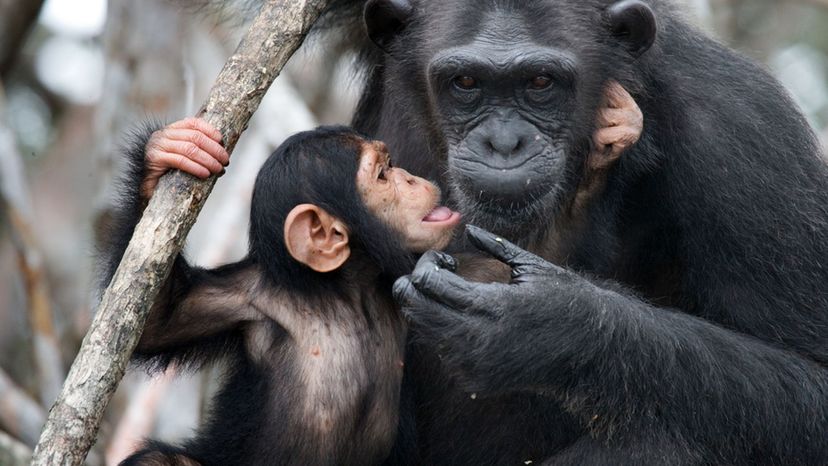
shutterstock
Which animal is this?
Chimpanzee
Closely related to the bonobo, the chimpanzee is suffering the same fate at their primate cousins, with numbers declining rapidly. In fact, they have already disappeared from four African countries they once called home. It is estimated that around 150,000 to 250,000 remain, although poaching, deforestation, and disease are lowering their numbers at an alarming rate. Chimps are the closest living relatives of humans.
Lemur
Eastern Black Crested Gibbon
Blond Capuchin
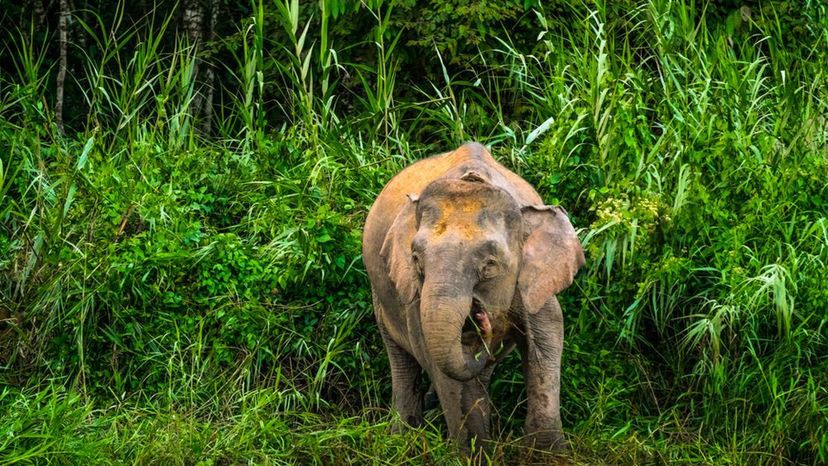
shutterstock
Which animal is this?
Karakul
Anteater
Grey Mouse
Borneo Pygmy Elephant
A subspecies of the Asian elephant, the Borneo pygmy elephant has seen its number decline rapidly. In fact, it is estimated that only 1,000 to 1,600 of these animals are left in the wild. This is due to the destruction of their habitat, mostly through deforestation for the production of palm oil.
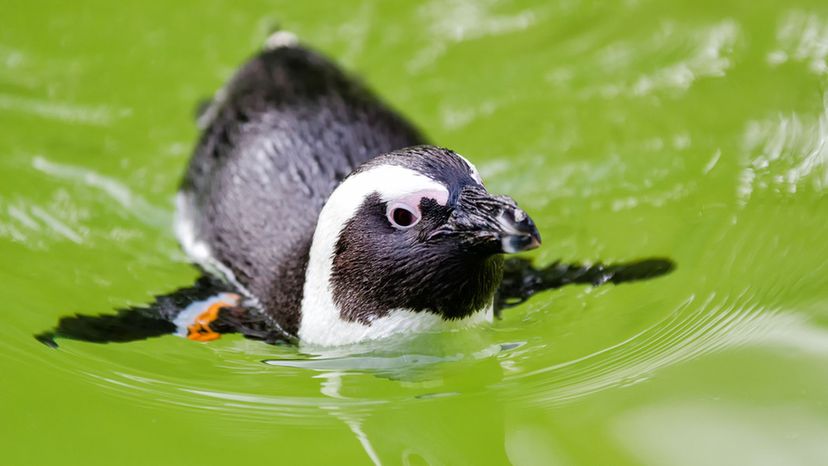
shutterstock
Which animal is this?
Cormorant
Galápagos Penguin
This is the only penguin found north of the equator. Thanks to the weather effect known as El Niño, the numbers of the Galápagos penguin declined dramatically. At a point, only 500 were on the island after which they are named. Because of El Niño, the fish that lived near the islands disappeared due to raised ocean temperatures, depriving the penguins of their primary source of food. Luckily, shifting ocean currents have seen a reverse in this trend and their population has increased to around 2,000, although they remain on the WWF's endangered list in 2017.
Albatross
Puffin
Advertisement
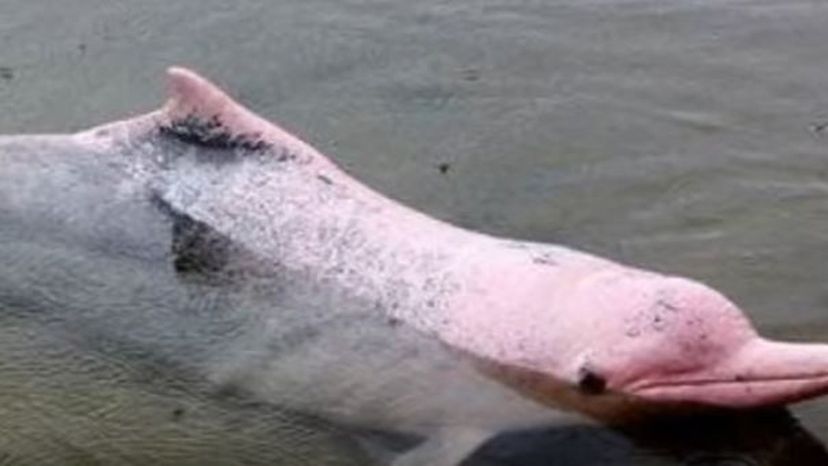
youtube
Which animal is this?
Ganges River Dolphin
There are an estimated 1,200 to 1,800 Ganges River dolphins left in the world, as of 2017. They are under continual threat, mostly due to the construction of dams along the river systems they inhabit, but also thanks to overfishing and pollution. Although they used to move in massive schools, the dams have isolated the dolphins from one another, severely affecting breeding and their numbers. The Ganges River dolphin is noted for its long mouth.
Porpoise
Sperm Whale
Manatee

shutterstock
Which animal is this?
Humphead Wrasse
A coral reef fish that can grow to six feet in length, the humphead wrasse is on the WWF's endangered species list. These fish mostly live in the Coral Triangle, a section of the Pacific Ocean in and around the Philippines, Indonesia and Papua New Guinea. The species has come under threat, mostly as a result of overfishing and illegal trade, as it is highly valued as a live food source in China and other parts of Asia.
Brazilian Guitarfish
Atlantic Halibut
Bluefin Tuna
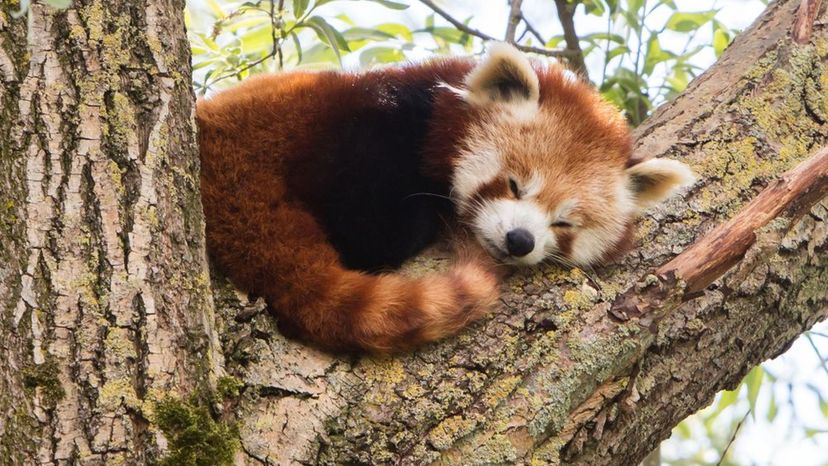
shutterstock
Which animal is this?
Raccoon
Corsac Fox
Darwin's Fox
Red Panda
With less than 10,000 left in the world, the red panda is an endangered species that lives in China, Nepal and Bhutan. Red pandas are covered in thick fur and have a bear-shaped body, but are only slightly bigger than a domestic cat. They also have long tails, which they use for balance. They are under threat as a result of trapping, often getting caught in traps meant for other animals. Their pelts are highly valued and made into fur caps.
Advertisement
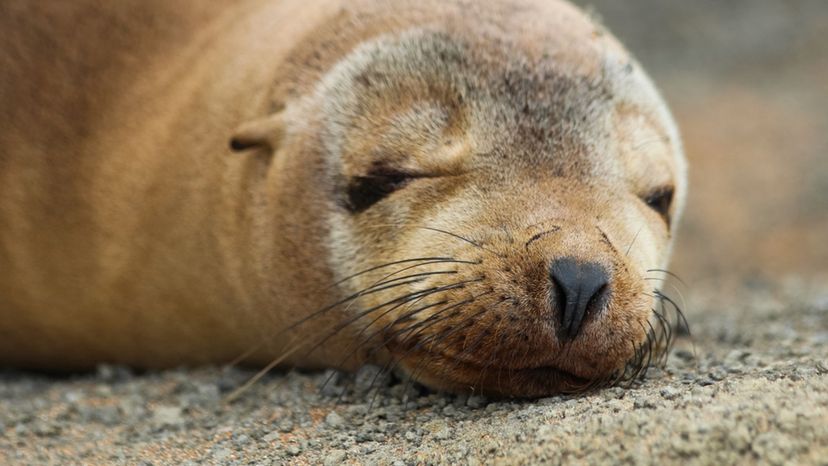
Shutterstock
Which animal is this?
Walrus
Sea Lion
Sea lions are under threat for a number of reasons. Although they are protected by international law, some unscrupulous fishermen still treat these animals with disdain, seeing them as poachers stealing their catch. Pollution also plays a major threat to their numbers and they remain susceptible to disease. Climate change has affected their number through dwindling fish stocks, their only source of food.
Sperm Whale
Cape Fur Seal
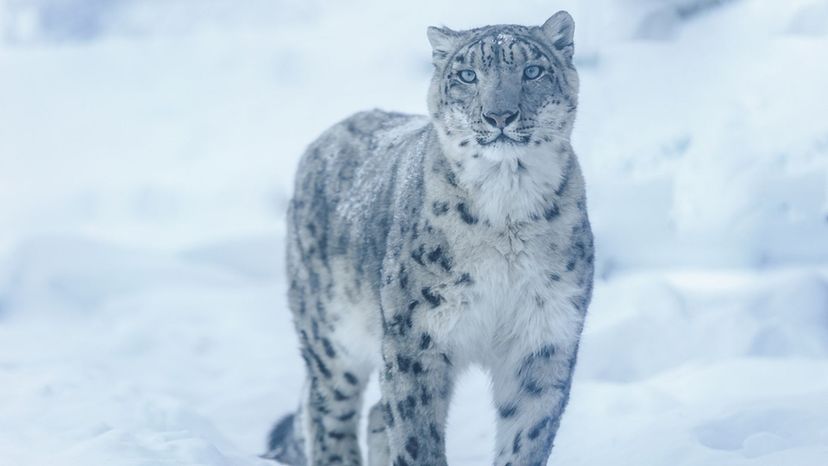
shutterstock
Which animal is this?
Snow Leopard
With a population of around 4,000 to 6,000 left in the world, as of 2017, the snow leopard is currently considered endangered. They reside mostly in mountains, such as the Eastern Himalayas but can be found in Mongolia, China as well as Pakistan and Afghanistan. As the top predator in their mountainous terrain, their only threat comes from humans. They are often hunted because they kill livestock (mostly because their main food sources are also hunted by locals). Their natural habitat is becoming smaller and fragmented, again as man moves into it.
Polar Bar
Arctic Fox
Arctic Wolf

shutterstock
Which Animal is this?
Manatee
Pygmy Orca
False Killer Whale
Dugong
Although not yet on the WWF's endangered species list, the dugong, a marine mammal similar to the manatee, is designated as vulnerable. They live in the Coral Triangle, a section of the Pacific Ocean in and around the Philippines, Indonesia, and Papua New Guinea as well as the coast of East Africa. Dugongs are under threat mainly as a result of human development affecting the availability of their main food source, sea grass, but they can also be caught up in fishing nets.
Advertisement
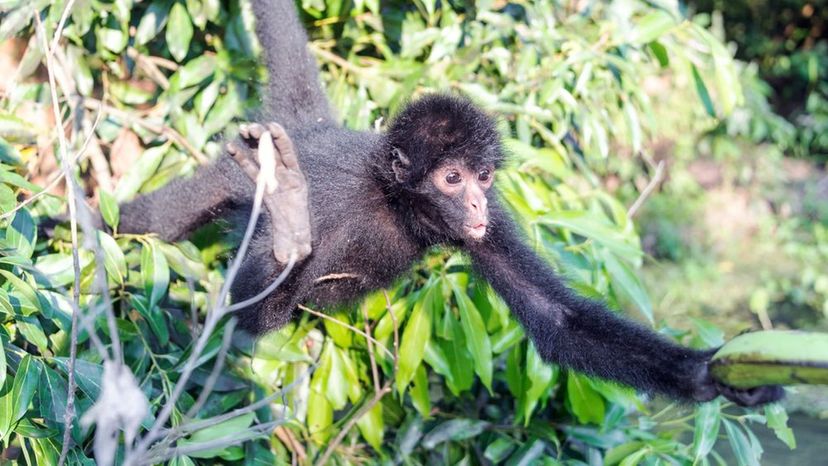
shutterstock
Which animal is this?
Gibbon
Tarsier
Black Spider Monkey
This primate, found in eastern South America, is under threat as a result of deforestation as well as from the effects of hunting. Black Spider Monkeys are not yet on the WWF's endangered list but are currently rated as vulnerable. They remain critical for the rain forest ecosystem, especially for seed dispersion. This species weighs between 15 and 19 pounds, and its tail is over two feet in length.
Lutung

shutterstock
Which animal is this?
Leatherback Sea Turtle
Giant Tortoise
Giant Tortoises reside on the Galapagos Islands and grow to as much as four feet long. They weigh up to 700 pounds. When the islands were discovered and started to receive more visitors and inhabitants, the Tortoises became a food source and their numbers began to drop dramatically. Animals brought to the island also influenced their population negatively, especially as they destroyed eggs and competed for grazing. They are currently assigned vulnerable status by the WWF.
Manta Ray
Armadillo
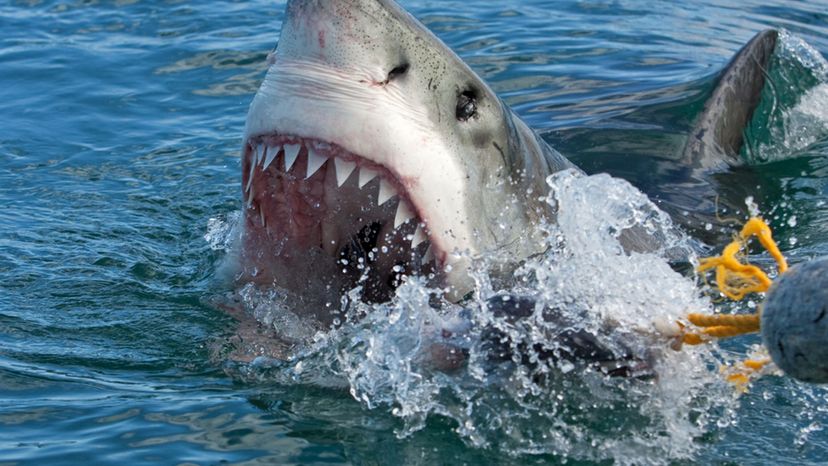
shutterstock
Which animal is this?
Whale Shark
Orca
Great White Shark
As the apex predator of the ocean, theoretically, Great White Shark numbers should never be a problem. Unfortunately, mankind had other ideas. These sharks are hunted as trophies (especially for their teeth) as well as for their fins, a delicacy in Asia. They are also caught in fishing nets and nets near beaches that offer protection to swimmers. The Great White, currently ranked as vulnerable by the WWF, lives in oceans around the world, including near California, South Africa, and Australia.
Blue Whale
Advertisement

shutterstock
Which animal is this?
Hippopotamus
Hunted for their ivory teeth as well as their meat, the hippopotamus is also losing its natural habitat through the growth of Africa's population. Interestingly, despite them looking similar to pigs, their closest relatives are actually whales and porpoises. Classified as vulnerable, hippos are now mostly confined to protected areas.
Black Rhino
White Rhino
African Elephant
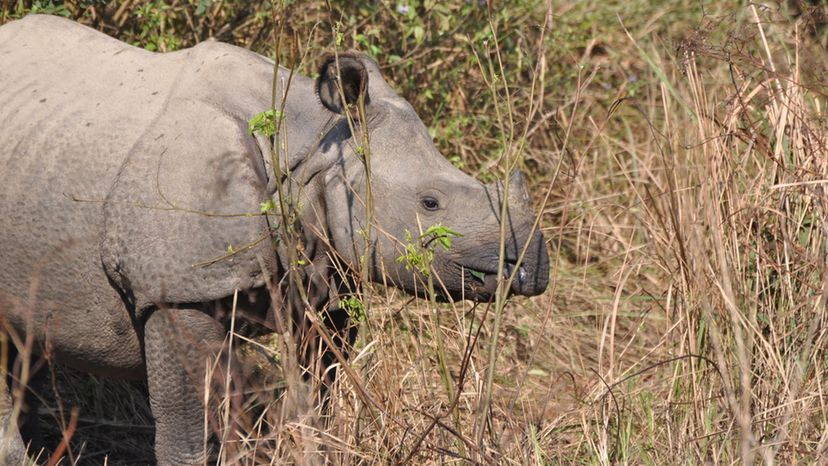
shutterstock
Which animal is this?
Hippopotamus
Indian Elephant
Tapirs
Greater One-Horned Rhino
This rhino, native to India, the eastern Himalayas and Nepal, is the largest rhino species in the world. In 1975, there were only 600 of these creatures left in the wild. Luckily, through a concerted conservation effort, this number has grown to over 3,500 today. These rhinos are easily identifiable, thanks to their single black horn which stands between 8 to 25 inches in height. Their numbers were severely affected by hunting, until they received protection, as well as the reduction of their natural habitat thanks to the expansion of human settlements.

shutterstock
Which animal is this?
Kinosternidae
Loggerhead Turtle
Named for their massive heads that provide their jaw muscles with support, loggerhead Turtles are common to the Mediterranean. Their main breeding grounds are beaches from Libya, to Greece and Israel. They are also found elsewhere in the world, including the United States as well as parts of Asia. They grow to about 48 inches in length and can weigh up to 400 pounds. Although they currently are set as vulnerable on the WWF species list, they are under constant threat. This is due to the fact that they are often caught as bycatch while human development means their traditional breeding grounds are been lost.
Trionychidae
Roti Island Snake-Necked Turtle
Advertisement
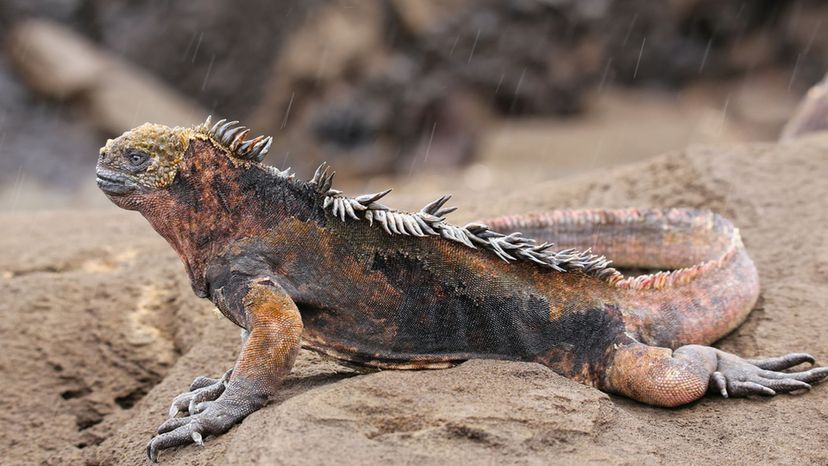
shutterstock
Which animal is this?
Marine Iguana
Growing between 2 to 5 feet long, the marine iguana is a native of the Galapagos Islands. They are unique in the fact that they swim in the waters around the island, foraging for algae from submerged rocks as well as the seabed. With the introduction of other animals to the island, including dogs and cats, among others, they are under pressure as they have become prey in many cases. A rise in temperature, as well as sea level, also affects their ability to regulate their internal body heat, which affects egg production.
Large-Scaled Chameleon Gecko
Tiger Chameleon
Aran Rock Lizard
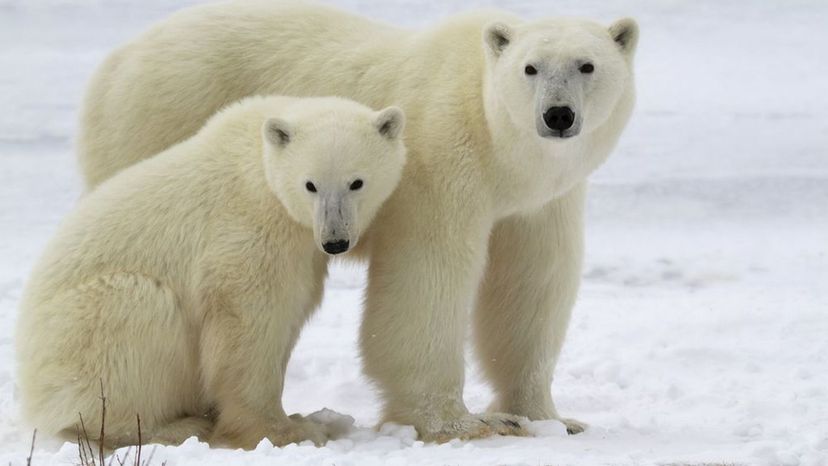
shutterstock
Which animal is this?
Arctic Fox
Polar Bear
Climate change has had a massive effect on the habitat of the polar bear. Although it is very difficult to get exact numbers, there are an estimated 22,000 to 31,000 of these magnificent creatures left in the world, as of 2017. Due to global warming, sea ice in their habitats is disappearing for long periods. This means that polar bears have less time to hunt seals, their natural prey, as they wait for ocean water to freeze. Interestingly, although their fur is transparent and appears white, their skin is black underneath.
Arctic Wolf
Black Bear

Youtube
Which animal is this?
Vaquita
Bottlenose Dolphin
Hector's Dolphin
Yangtze River Dolphin
Although the Yangtze River dolphin has been declared extinct, there are reports that some have been spotted in the Yangtze River in China. Their decline is a result of entanglement in fishing nets, illegal fishing, underwater blasting, collisions with boats on the busy river and the construction of dams. Whether the Yangtze River dolphin can make a comeback remains to be seen.
Advertisement
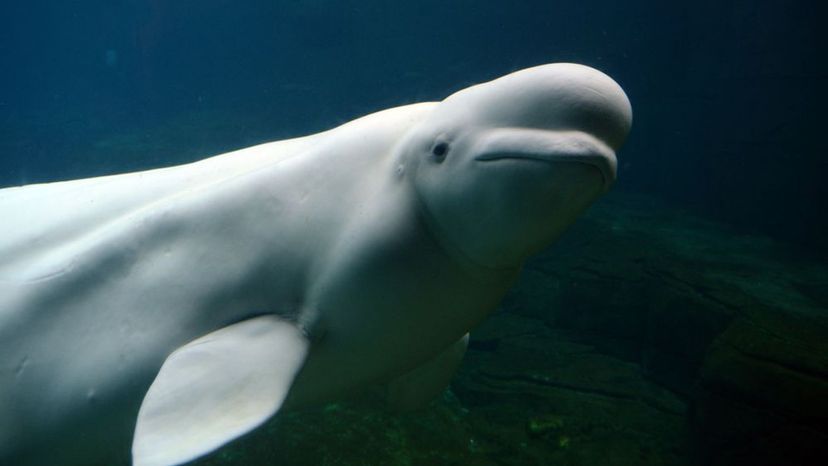
shutterstock
Which animal is this?
Baleen Whale
Beluga Whale
Although they are born gray, by the time they are full size, beluga whales become a brilliant white. They range in length from 8 to 25 feet and can weigh up to 1.5 tons. They are found in the Arctic regions in the northern hemisphere. Unfortunately, their numbers have dwindled, mostly due to the fact that they are hunted and are the natural food for orcas. Of course, human developments have also played a part in their decline, including oil and gas exploration, pollution and bycatch. As of 2017, their population is estimated at around 150,000.
Narwhal
Sei Whales
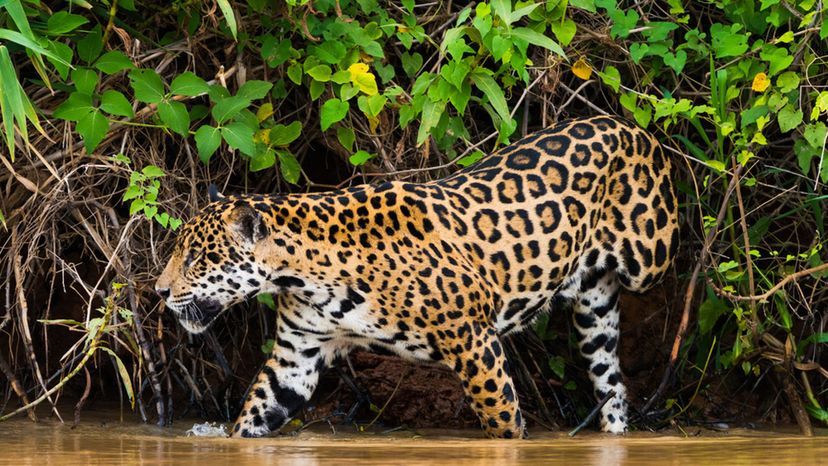
shutterstock
Which animal is this?
Cheetah
African Lion
Jaguar
Jaguars are found in wet lowlands, swampy savannas, or tropical rain forests. As with many endangered species, humans are the main threat to Jaguars. They are hunted for their fur, killed to protect livestock while their natural habitats have declined due to human development and deforestation, particularly in South America. They currently have a near threatened status with the WWF.
Snow Leopard
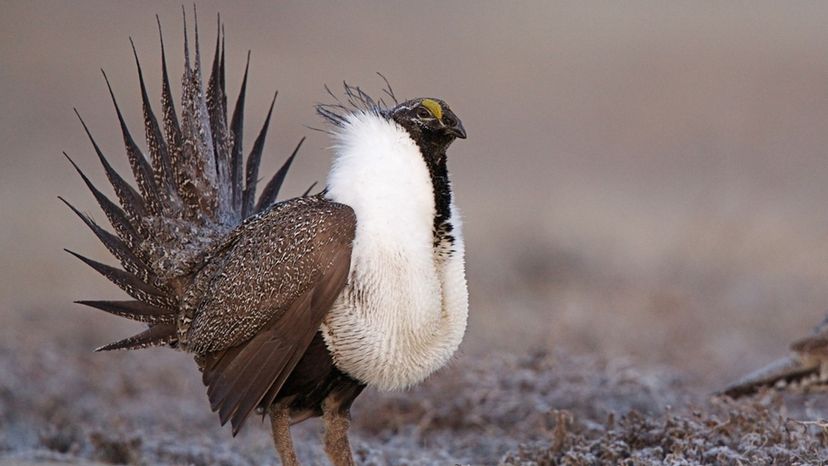
shutterstock
Which animal is this?
Piping Plover
Kagu
Marbled Murrelet
Greater Sage-Grouse
With a population between 100,000 to 500,000 and near threatened status, the greater sage-grouse has come under attack, mostly thanks to human development, oil and gas exploration and development, and climate change. They are found in the Northern Great Plains and can grow up to 2 feet in height and 30 inches in length, and weigh between 2 and 7 pounds. The greater sage-grouse is known for impressive mating dances.
Advertisement

shutterstock
Which animal is this?
Monarch Butterfly
Monarch butterflies are one of nature's great migration stories, traveling from the U.S. and Canada to forests in central Mexico, where they spend time in hibernation. Unfortunately, this majestic butterfly with its distinct orange wings is under threat, with recent estimates showing a 27% decrease in their population. This is mostly due to climate change affecting weather at their hibernation grounds, as well as summer breeding areas, but habitat loss also plays a part. These all affect the availability of food for the caterpillar phase of their development.
Wolkberg Zulu
Dickson's Opal
Schaus Swallowtail
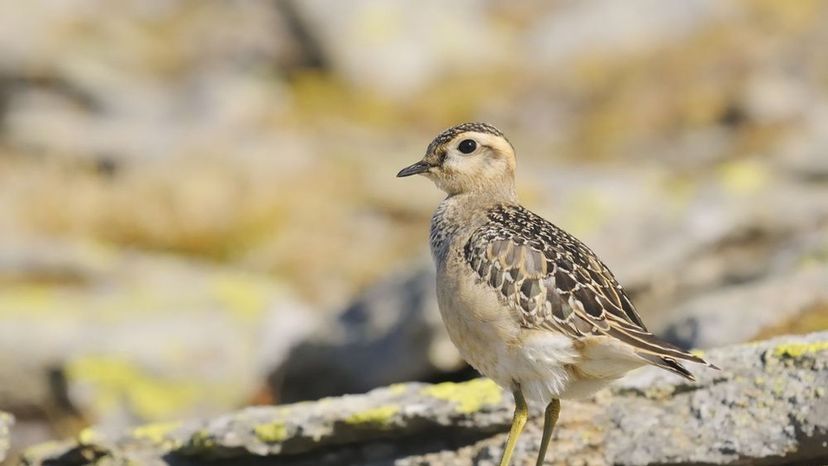
shutterstock
Which animal is this?
California Condor
Mountain Plover
Mountain plovers live in the western Great Plains, between Canada, the United States and Mexico. They currently have near threatened status with the WWF. It is estimated that the population of this bird sits at around 20,000. Their numbers are dwindling, due to the loss of their natural nesting grounds to vineyards, orchards and other forms of development.
Whooping Crane
Great Indian Bustard
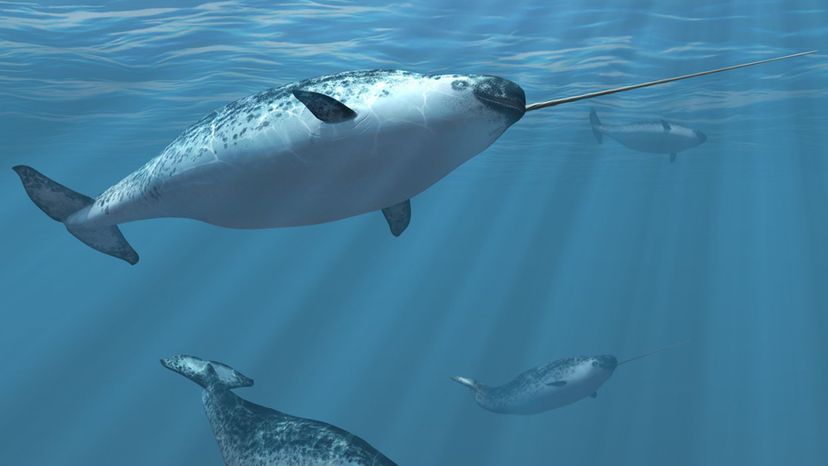
shutterstock
Which animal is this?
Hawaiian Monk Seal
Sea Otter
Hourglass Dolphin
Narwhal
With a spiraled tusk - actually an enlarged tooth - jutting from its head, the Narwhal is certainly an impressive-looking mammal. This tusk can grow to 10 feet long in some cases. Narwhals live in the Arctic, from Canada to Russia. Narwhal numbers currently stand at around 80,000 and continue to dwindle. due to increased shipping in their habitats, related to gas and oil exploration. This interferes with their ability to communicate, which can affect their chances of finding food and a mate, avoiding predators, and navigating in general.
Advertisement
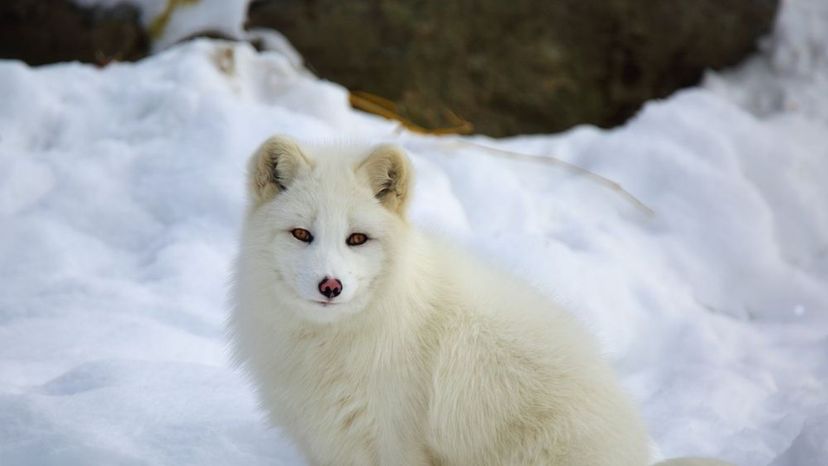
shutterstock
Which animal is this?
Polar Bear
Arctic Fox
Arctic fox numbers have improved dramatically,with a major decline in hunting them for their pelts. Although they are still hunted, it is now by the indigenous people of the Arctic region. Arctic Foxes grow up to 11 inches in height and 27 inches in length. They can weigh anywhere from 3 to 20 pounds.
Snow Leopard
Arctic Tiger
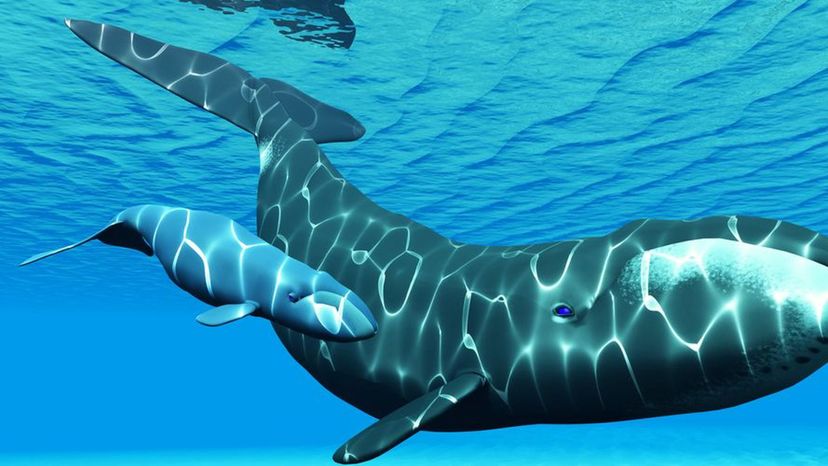
shutterstock
Which animal is this?
Bowhead Whale
With their massive bodies and powerful heads, these impressive creatures can break through thick ice. They grow up to 60 feet long and weigh between 75 and 100 tons. They migrate the Arctic and it is thought there are 10,000 bowhead whales in these waters. Some specific populations, such as those found near Greenland, are under threat and considered endangered. Although once only threatened by whaling, these mammals now are at risk due to pollution, oil and gas exploration, climate change and habitat loss.
Manatee
Steller Sea Lion
North Pacific Right Whale
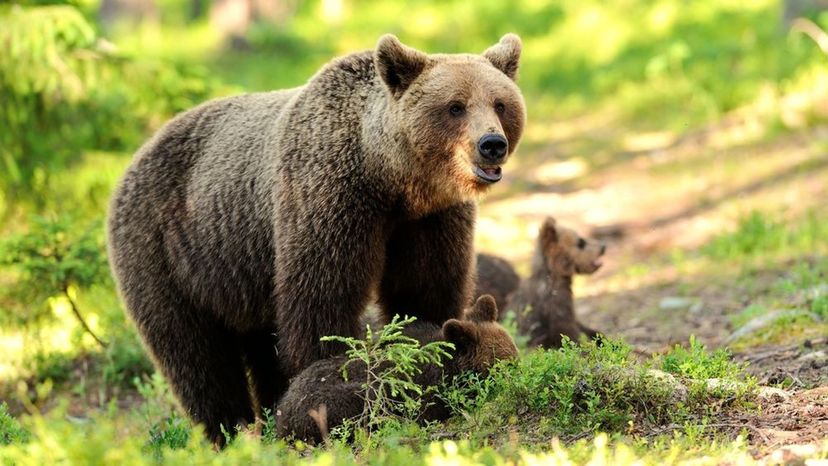
shutterstock
Which animal is this?
Asiatic Black Bears
Brown Bear
Living in forest and tundra habitats, brown bears are impressive - especially when they stand on their hind legs. On all fours, brown bears grow up to 3.35 feet in height, measured to their shoulders, and weigh up to 770 pounds. They live throughout the world and mainly come under threat from hunters. Their gall bladders are used in Asian medicine. Logging, mining, and construction have also reduced their natural habitat significantly.
Giant Panda
Sun Bears
Advertisement
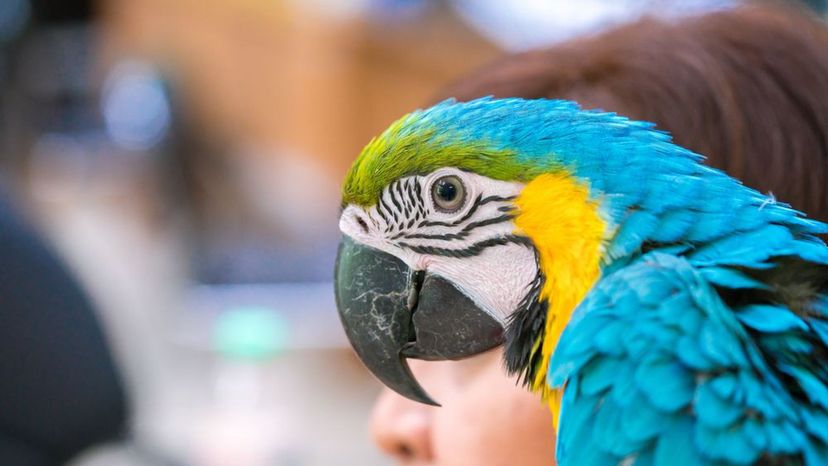
shutterstock
Which animal is this?
African Grey
Sun Conure
Macaw
A stunning blue and yellow bird, the Macaw is mostly found in the Amazon rainforest. They make excellent pets, but unfortunately, the illegal pet trade has had an effect on their numbers. The WWF have urged people who would like one as a pet to get one through breeding programs instead of importing them from overseas. They can live up to 60 years.
Forest Owlet
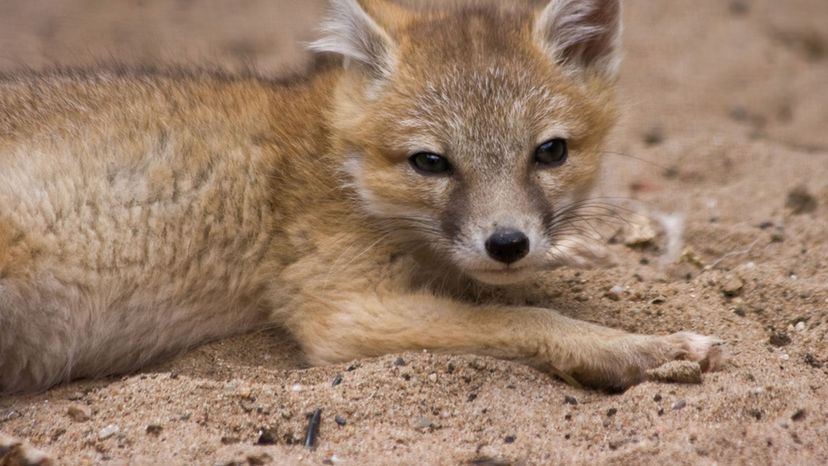
Shutterstock
Which animal is this?
Swift Fox
The swift fox can be found in the grassland areas of Northern America, including those in Texas, New Mexico and Colorado. It is not know how many are currently in the wild, although experts suspect that their natural habitat has been reduced by as much as 40%. This is due to human development and predation from coyotes, as well as climate change.
Kit Fox
Fox Squirrel
Ethiopian Fox
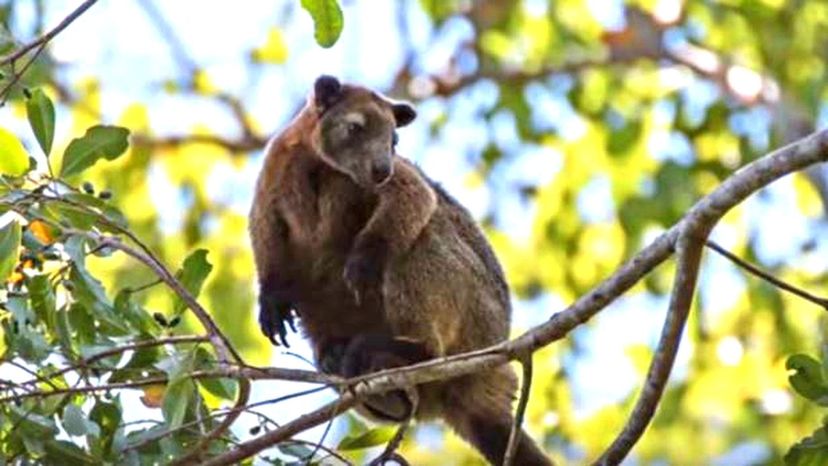
youtube
Which animal is this?
Tasmanian Devil
Tree Kangaroo
Found in Australia, Indonesia and Papua New Guinea, the tree kangaroo is in decline because of habitat loss through deforestation and hunting. Many of the 14 different species of this Macropod are at risk.
Dunnart
Woylie
Advertisement
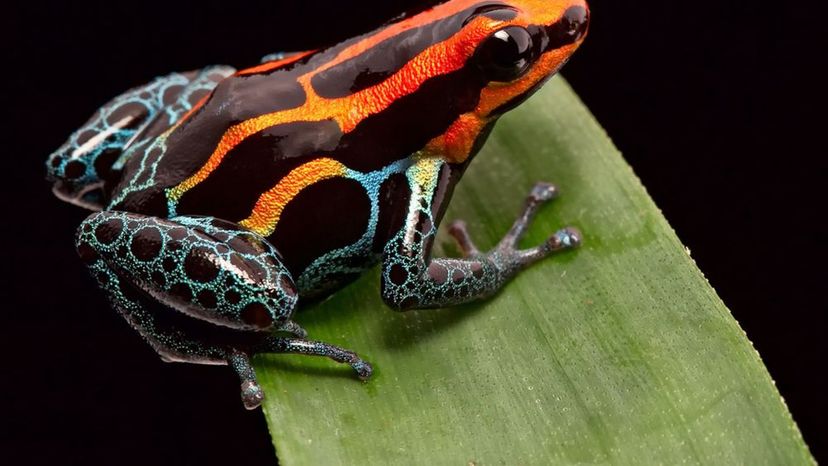
shutterstock
Which animal is this?
Darwin's Frog
Bullfrog
Burrowing Frog
Poison Dart Frog
There are over 100 different species of colorful poison dart frogs. Their colorful looks warn predators not to eat them - and they are indeed poisonous. There are many reasons for their decline, including a loss of natural habitat, smuggling and disease, as well as pollution. They live in a forest habitat.
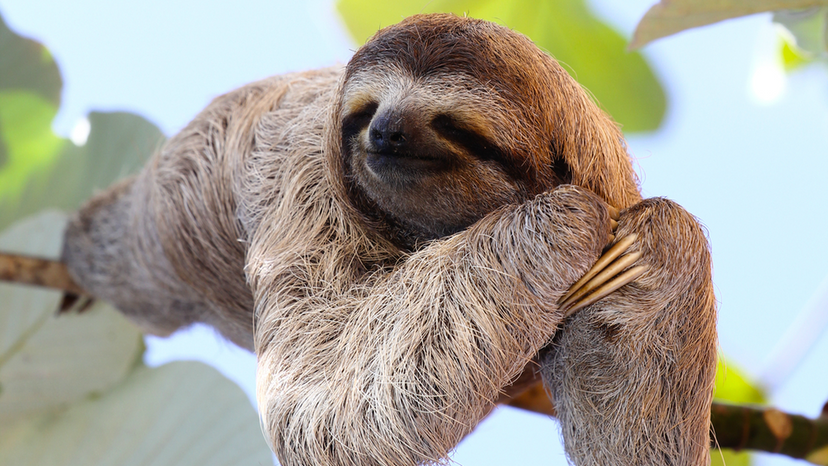
Shutterstock
Which Animal is this?
Wombat
Sloth
Living in the rain forests, all sloths are under threat, with the pygmy sloth critically endangered. This is a result of deforestation. There are two types of sloths - two-toed and three-toed - and six species.
Koala Bear
Kangaroo
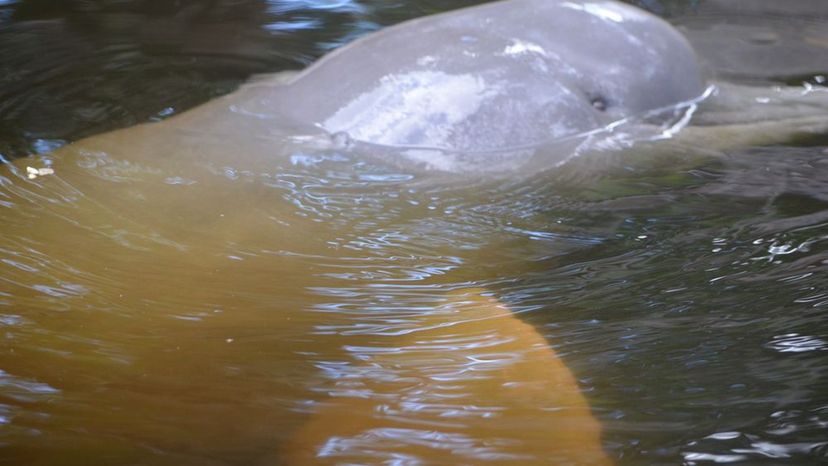
shutterstock
Which Animal is this?
Baiji
Hector's Dolphin
Amazon River Dolphin
Sometimes called a pink dolphin or boto, the Amazon River dolphin can grow up to 9 feet in length and weigh close to 350 pounds. Although it is not critically endangered in certain areas along the Amazon, it is under threat due to the development of dams, as well as mercury pollution.
Maui Dolphin
Advertisement
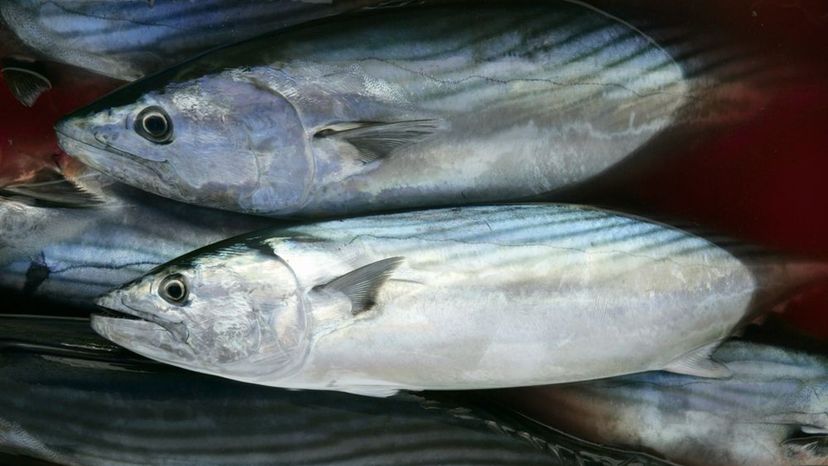
shutterstock
Which animal is this?
Ornate Sleeper Ray
Angel Shark
Spiny Dogfish
Skipjack Tuna
Found in the tropical waters of the Pacific, Atlantic and Indian ocean, the skipjack is the smallest of the tuna species - and the most abundant. The main threat to these fish comes in the form of bycatch, as well as overfishing, but, for now, they are not critically endangered.

shutterstock
Which animal is this?
Addax
Hirola
Pronghorn
With a population of around 700,000, the pronghorn antelope is found throughout the United States as well as parts of Canada and Mexico. Although it is not on any critically endangered list, the species is under threat as developments such as housing, fencing or even walls can affect their migration patterns, which in turn affect breeding.
Oribi
You Got:
/50
Shutterstock